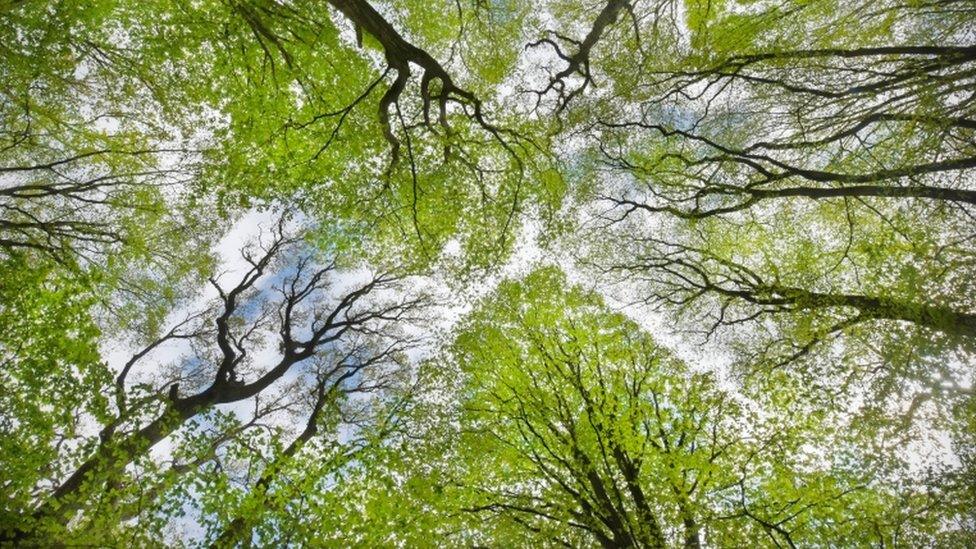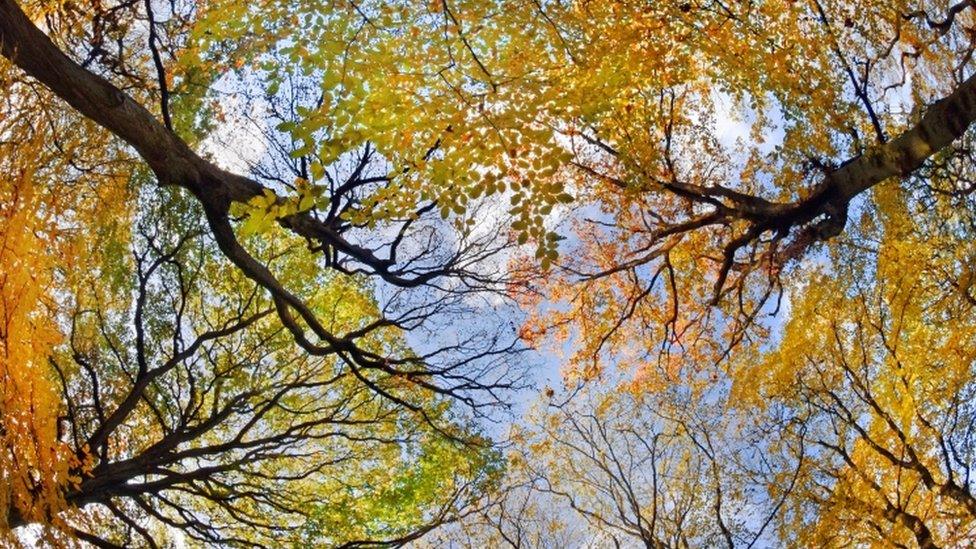Tree shortage areas revealed in mid Suffolk and Babergh
- Published

The councils hope the survey will reveal the areas which would benefit the most from tree planting
A tree canopy survey commissioned by two councils has revealed the areas which have fewer trees than average.
The report for Babergh and Mid Suffolk councils, external said some wards had between eight and 10% tree coverage, compared to the English average of 16%.
A canopy survey estimates the ground area covered by a tree's leaves, branches and stems.
The councils hope the report will enable officers to apply for more funding for tree planting.
The survey was conducted by Treeconomics, a social enterprise, external that works to understand how trees improve urban spaces.

Rural areas can have fewer trees because they have been cut down for farming, the survey says
It said the councils, which share a chief executive, external, should set a short-term target of 15% coverage and a long-term target of 20%, as reported by the Local Democracy Reporting service.
Ms Fleming, Conservative cabinet member for environment at Mid Suffolk District Council, said it could be used to identify "places that would most benefit from tree planting" and added: "We also recognise the value that access to open space brings to our residents' health and wellbeing."
Green councillor Jane Gould, Babergh District Council's cabinet member for climate change, biodiversity, and sustainable transport, said: "If approved for publication, it will also benefit our parishes, community groups as well as housing developers... ensuring Babergh remains a place people are proud to live and work for years to come."
The survey recognises that rural land often has lower tree coverage than urban land, because trees have been cut down to make room for farming.
Treeconomics director Kenton Rogers said: "The internationally recognised target for tree coverage is 30%, so there's a lot more still to be done in England."

Find BBC News: East of England on Facebook, external, Instagram, external and Twitter, external. If you have a story suggestion email eastofenglandnews@bbc.co.uk